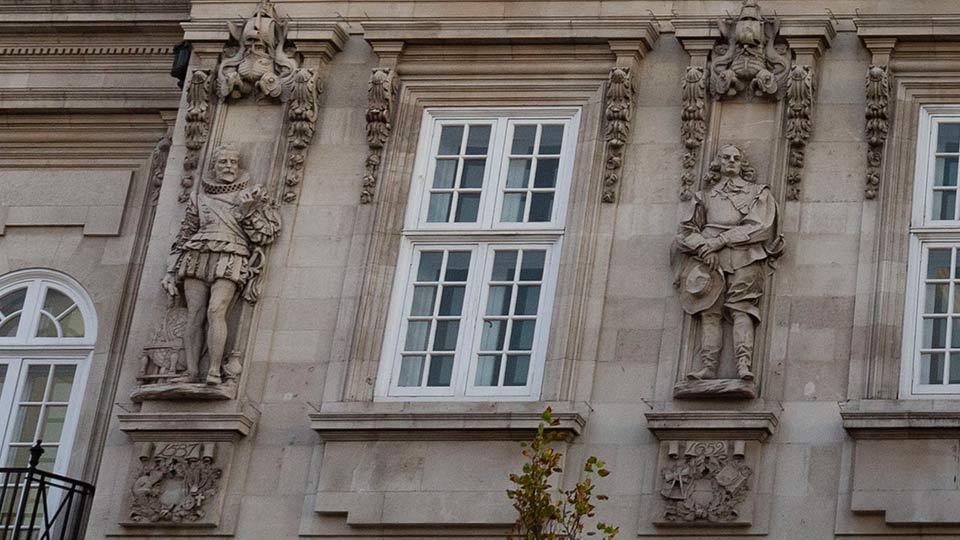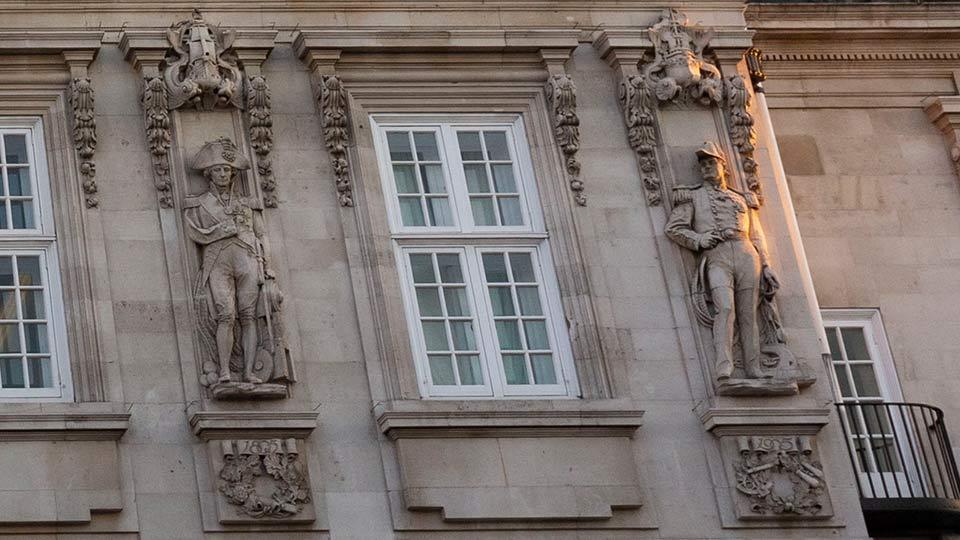Deptford Town Hall external statues
Notes on history and context of external statues on Deptford Town Hall.
Primary page content
Deptford Town Hall
This building opened in 1905 as the municipal centre for the former Metropolitan Borough of Deptford, which merged administratively with Lewisham in the 1960s. The building was acquired by Goldsmiths, University of London, in the late 1990s.
Its symbolic decoration raises difficult questions about how to deal with historic celebrations of those who wielded imperial power, subjugating other nations and enslaving their people.
The four statues in the niches at the front of the building (pictured below) represent four naval figures:
- Sir Francis Drake (c. 1540 – 1596) was a pioneer of the slave trade making at least three royally sponsored trips to West Africa to kidnap Africans and sell them. Elizabeth I awarded Drake a knighthood in 1581 which he received on the Golden Hind in Deptford.
- Robert Blake (1598 – 1657) was an admiral who served under Oliver Cromwell throughout the English Civil War. He fought the Dutch to secure the trade triangle between the Caribbean, West Africa and England. Cromwell was responsible for trafficking the first waves of enslaved people to and from the Caribbean; installing the plantation system in Jamaica; and the massacres in Drogheda (1649).
- Horatio Nelson (1758 – 1805), was a naval flag officer whose leadership is credited with a number of decisive British victories, particularly during the Napoleonic Wars (1803 – 1815). Nelson spent a large part of his career in the Caribbean and developed an affinity with the slave owners there, with evidence suggesting he used his influence to argue against the abolitionist movement in Britain.
- The fourth statue is understood to be a ‘representative’ figure, rather than a specific person, from the period when the building was constructed. It shows a modern admiral, with sextant and binoculars.


Context and controversy
These figures were selected by the borough to adorn its town hall to mark the area’s long and deep maritime connections: Deptford’s Royal Naval Dockyards closed less than 40 years before this building was opened. The area was intimately connected with the transatlantic slave trade, with many ships built, fitted out or repaired in the local docks before heading to Africa. Olaudah Equiano – who fought to become a freed man and was one of the key figures in the abolitionist movement – was initially trafficked to Deptford.
Unsurprisingly therefore, modern commentators have raised concerns over the colonial imagery and their subjects’ connection to the horrors of slavery in particular. The debate about how we should present and interpret such controversial symbolism continues.
Acknowledgements
This material was produced to address one of the demands of Goldsmiths Anti-Racist Action, a BME-led student protest group launched in 2019. It is through that group’s tenacity and lobbying that these descriptions have been published to help reinterpret the building’s history through a contemporary lens. We were assisted by the research of Joan Anim-Addo, Les Back and the late Paul Hendrich, all Goldsmiths academics.